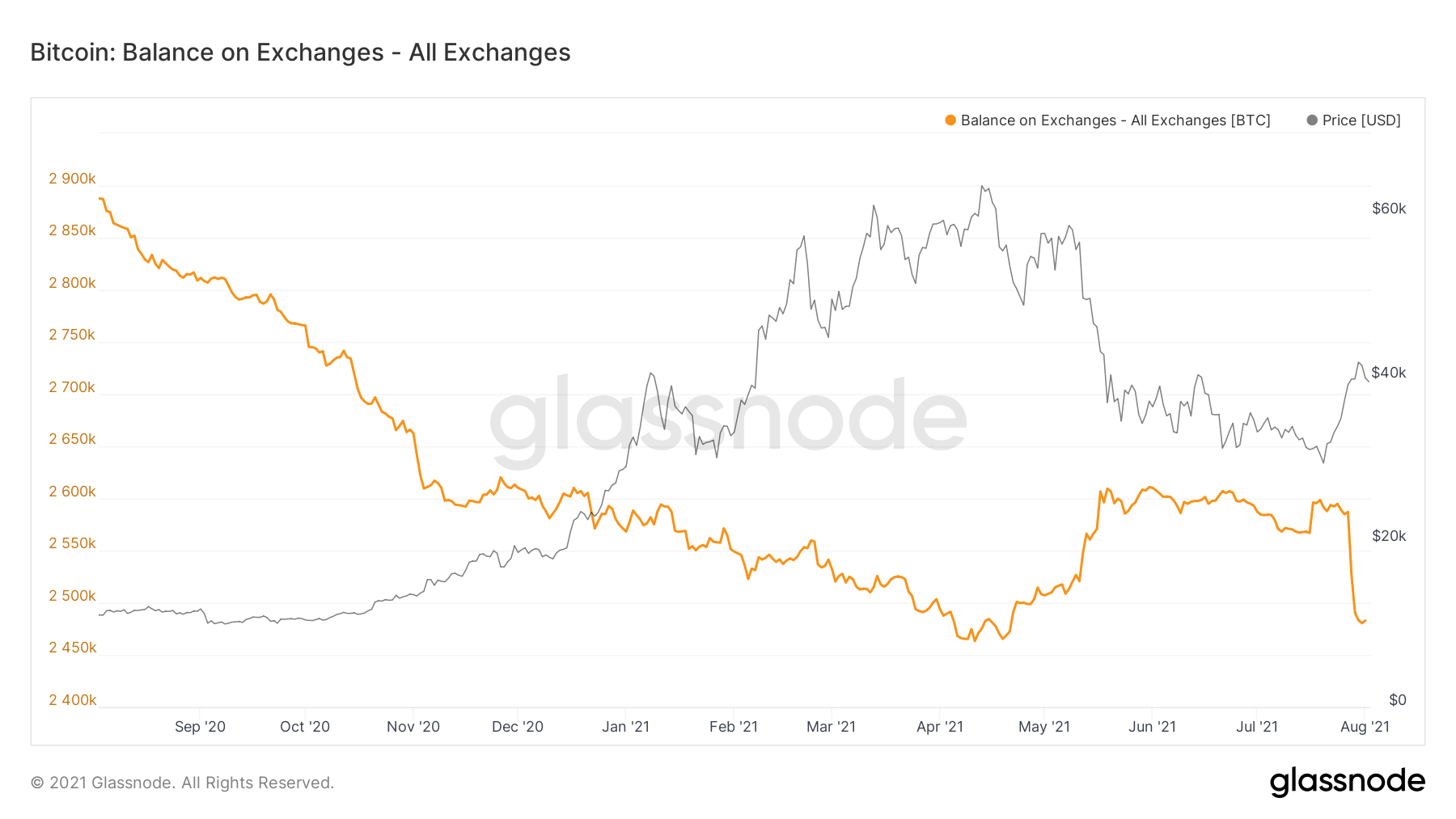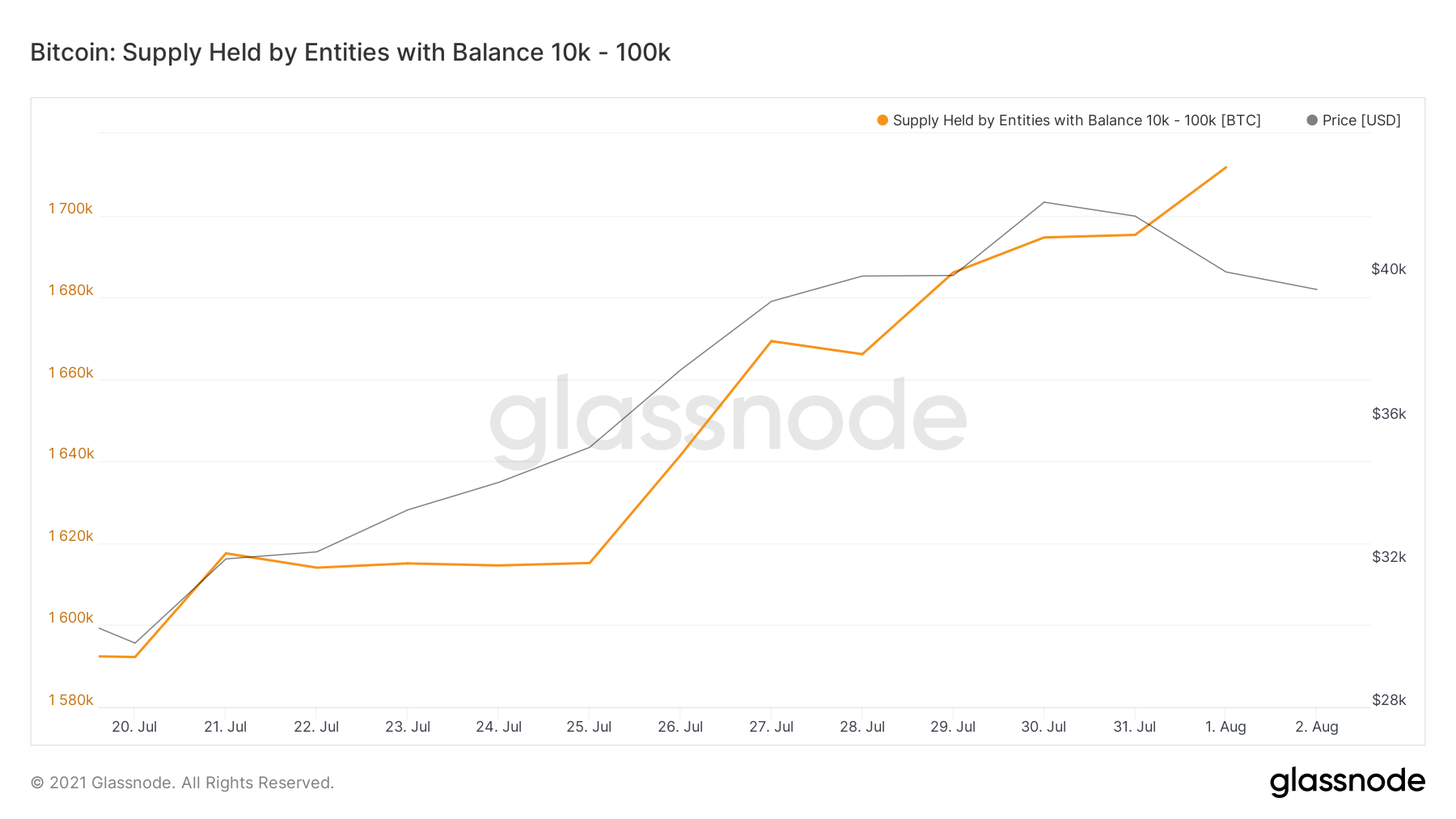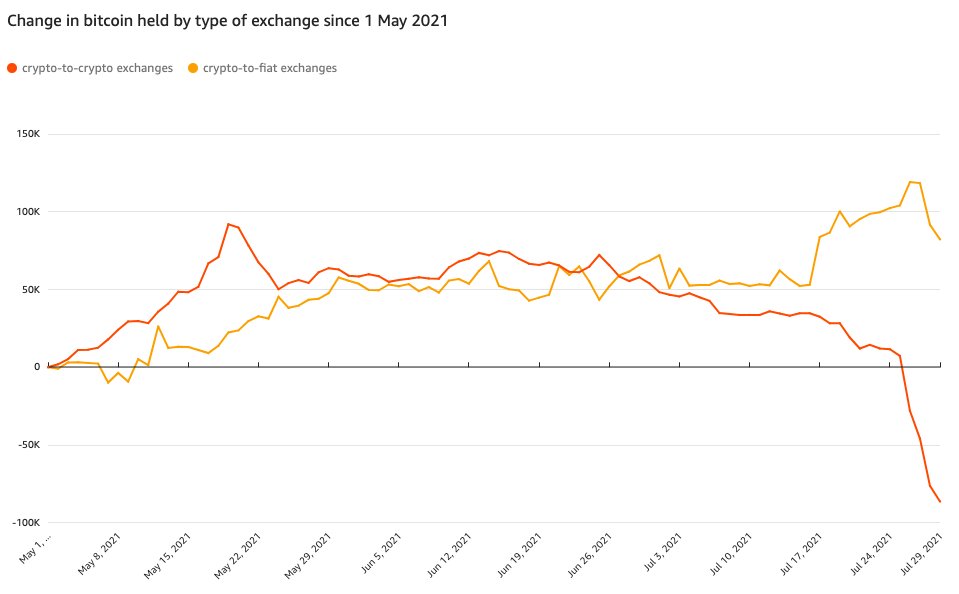
What Does Last Week's Steep Drop in Bitcoin's Balance on Exchanges Really Mean?
But the changing dynamics of the market show that as the crypto market grows bigger, relying on just one or two metrics can’t always reveal the full story of what’s going on.
Data from blockchain data firm Glassnode shows that the balance of bitcoin on all exchanges fell 4.1% to 2.48 million from 2.587 million in the last four days of July.

Bitcoin's balance on all exchanges.
The market’s initial reaction to the drop was positive, because as recently as last September, a decrease in the number of bitcoin held on all exchanges came at the same time as a price rally.
The presumed logic is simple: More BTC was moved off exchanges, potentially to cold storage wallets, as investors became more bullish about the long-term value of their bitcoin holdings.
But after analysts took a closer look at the data, particularly given that the recent drop was much steeper than the previous one, they said that the decline may not necessarily reflect just bullish sentiment.
It is “really hard to know what’s happening with just one dimension,” Willy Woo, an independent blockchain data analyst, told CoinDesk. “As the network changes, the measuring stick does along with it.”
Indeed, just as the market started noticing the drop, crypto exchange Kraken, for example, announced last week that the bitcoin balance drop on its exchange was the result of its internal transfers, which immediately damped some of the initial excitement.
“We can’t confirm that the drop is not entirely due to exchanges’ internal transfers,” Philip Gradwell, chief economist at blockchain data firm Chainalysis, said. “Some are, but not all, and potential withdrawals need to be observed for longer to see if they are genuine withdrawals.
“This makes giving definitive statements on exchange balances far back in the past pretty tricky,” he concluded. “We are working on an improvement to understanding this.”
Clara Medalie, research lead at blockchain data firm Kaiko, said that while it is easy to tell which addresses belong to an exchange, many more entities such as over-the-counter (OTC) desks and brokers associated with the exchanges are receiving lots of bitcoin.
“Thus, it is difficult to actually measure an exchange outflow because these transfers very well could just be being sent to other exchanges or trading desks, or simply between addresses on the same exchange,” Medalie said.
Bullish, but conservatively bullish
Some argue, however, that by also looking at a few other blockchain data metrics, last week’s drop in bitcoin’s balance on exchanges might still reflect a bullish market sentiment by large.
Woo told CoinDesk that when the drop took place last week, the holdings of the cohorts owning small, medium and large amounts of bitcoin increased, showing some aggressive purchases by both bitcoin whales (large holders) and smaller investors.
As CoinDesk reported, the actual number of BTC available for trading is much lower than bitcoin’s current supply at 18.77 million, or 89% of the 21 million cap, because of increased hoarding by investors and the permanent loss of mined BTC over the years. A decline on BTC’s balance on exchanges and increased BTC balances of holders across their wallet addresses indicate that some of the coins were sold to buyers off the exchanges.
“The largest of the whales may be exchanges that were previously thought of as distinct separate entities, when now we discover in effect they were exchanges all along,” Woo said. “‘Shrimps (bitcoin holders with less than one BTC) to smaller whales all increased their holdings … These guys are unlikely to be exchanges, so it validates most of the coins that left exchanges are real.”
As data from Glassnode shows, in the past two weeks, the total circulating supply held by entities with different amounts of BTC all increased, with the exception of entities with balances between 100 and 1,000 BTC, and those with balances of more than 100,000 BTC.

For example, the total circulating supply held by entities with BTC balances between 10,000 and 100,000 has increased in the past two weeks.
“When I see big outflows like this, I think that traders ‘like the price’ and are willing to hold over a longer time period,” George Kaloudis, research associate at CoinDesk, said. “It certainly shows that investors are more willing to weather the storm in the near-term given the friction of moving funds back on exchanges to liquidate.”
Changes in preferred exchanges
The outflows of bitcoin balance on exchanges, based on analysis by Chainalysis, is also a case-by-case situation, an indication that some investors and traders may have changed their preferred platforms for trading and other crypto activities.
As the chart below shows, the drop in the number of bitcoin held on crypto-to-crypto exchanges was much steeper than the drop in bitcoin balances on crypto-to-fiat exchanges since May 1.

“I think much of the bitcoin that has been withdrawn is moving exchanges, as people change which exchanges they trade on,” Gradwell said.
Even though it is not clear what has triggered the change of preferred crypto exchanges by traders and investors, Binance, the most popular crypto exchange by trading volume, has faced tougher regulatory actions in countries around the world.
Bitcoin's recent outflows from exchanges "was presumably catalyzed by Binance's announcement of dramatically lower withdrawal limits for non-KYC (know-your-customer) customers," blockchain research firm Delphi Digital wrote in its daily market update on July 29, which also noted that Binance and Coinbase were the top two exchanges in terms of absolute outflows.
Binance also said that its users in Germany, Italy and the Netherlands won't be able to open new futures and derivative positions on the platform.
On the other hand, the shift in preference for crypto-to-fiat exchanges also could signal that new investors in crypto are more comfortable with bitcoin investments only, according to CoinDesk’s Kaloudis.
“We are seeing new entrants to the bitcoin market who are presumably less comfortable trading across cryptos in general, [which is] theoretically more bullish for bitcoin adoption,” he said.
DISCLOSURE
The leader in news and information on cryptocurrency, digital assets and the future of money, CoinDesk is a media outlet that strives for the highest journalistic standards and abides by a strict set of editorial policies. CoinDesk is an independent operating subsidiary of Digital Currency Group, which invests in cryptocurrencies and blockchain startups. As part of their compensation, certain CoinDesk employees, including editorial employees, may receive exposure to DCG equity in the form of stock appreciation rights, which vest over a multi-year period. CoinDesk journalists are not allowed to purchase stock outright in DCG.


